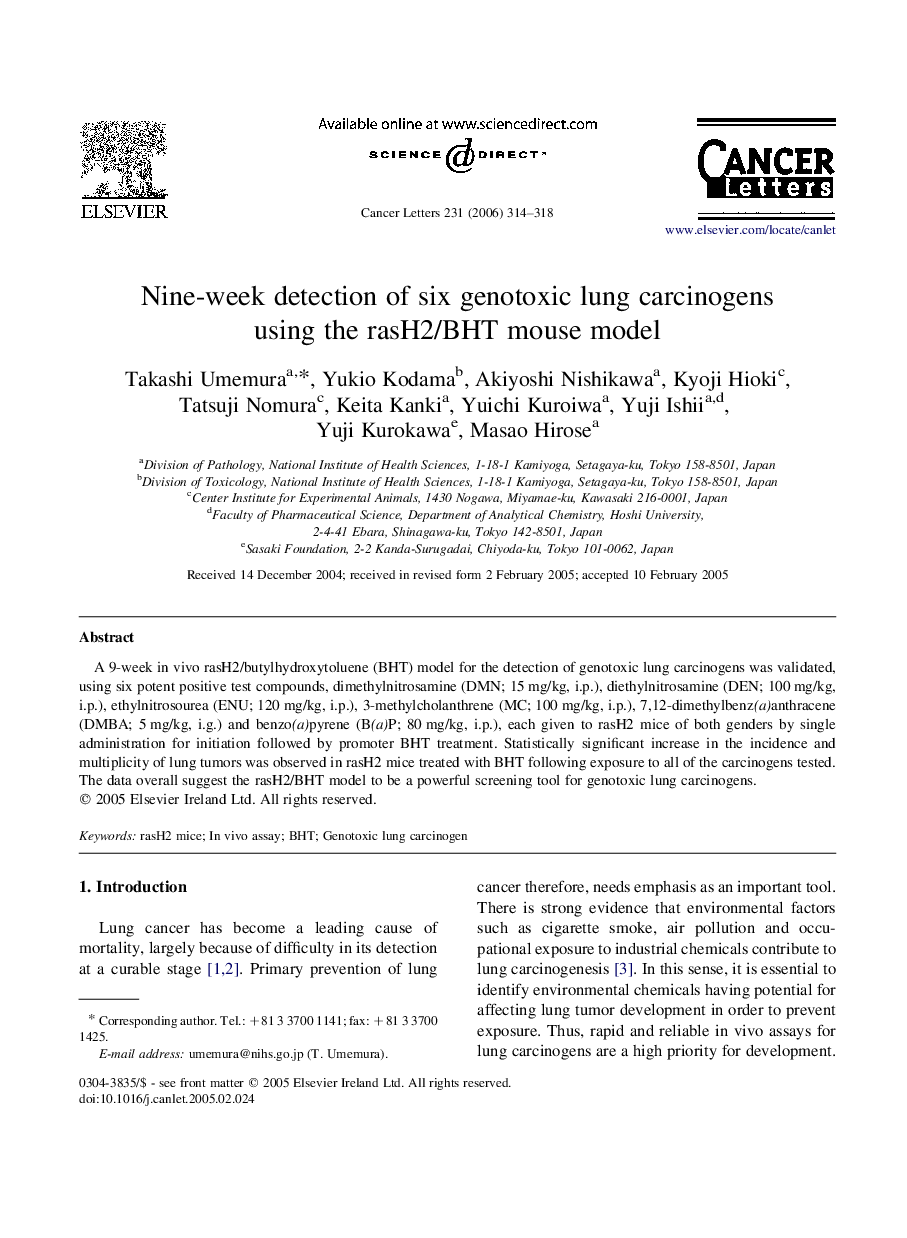| Article ID | Journal | Published Year | Pages | File Type |
|---|---|---|---|---|
| 2116929 | Cancer Letters | 2006 | 5 Pages |
Abstract
A 9-week in vivo rasH2/butylhydroxytoluene (BHT) model for the detection of genotoxic lung carcinogens was validated, using six potent positive test compounds, dimethylnitrosamine (DMN; 15Â mg/kg, i.p.), diethylnitrosamine (DEN; 100Â mg/kg, i.p.), ethylnitrosourea (ENU; 120Â mg/kg, i.p.), 3-methylcholanthrene (MC; 100Â mg/kg, i.p.), 7,12-dimethylbenz(a)anthracene (DMBA; 5Â mg/kg, i.g.) and benzo(a)pyrene (B(a)P; 80Â mg/kg, i.p.), each given to rasH2 mice of both genders by single administration for initiation followed by promoter BHT treatment. Statistically significant increase in the incidence and multiplicity of lung tumors was observed in rasH2 mice treated with BHT following exposure to all of the carcinogens tested. The data overall suggest the rasH2/BHT model to be a powerful screening tool for genotoxic lung carcinogens.
Keywords
Related Topics
Life Sciences
Biochemistry, Genetics and Molecular Biology
Cancer Research
Authors
Takashi Umemura, Yukio Kodama, Akiyoshi Nishikawa, Kyoji Hioki, Tatsuji Nomura, Keita Kanki, Yuichi Kuroiwa, Yuji Ishii, Yuji Kurokawa, Masao Hirose,
